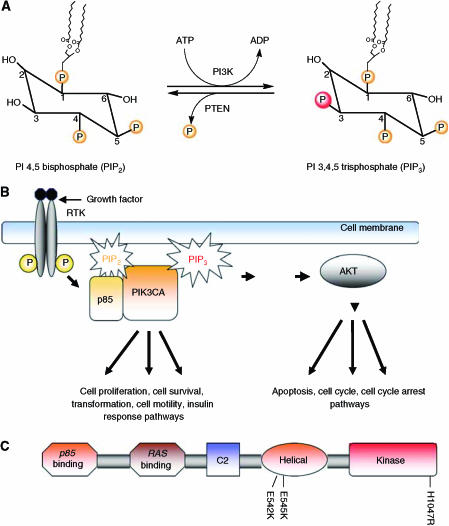Figure 1.
(A) The main reaction catalysed by PI3K: phosphatidylinositol (PI) 4,5 bisphosphate (PIP2) to phosphatidylinositol (PI) 3,4,5-triphosphate (PIP3). (B) PI3K is activated upon ligand binding to a receptor tyrosine kinase (RTK), which then activates the regulatory subunit (p85) to bind the catalytic p110α subunit. This ultimately triggers various downstream signalling cascades resulting in cell survival, apoptosis, transformation, metastasis, and cell migration. (C) Schematic representation of PIK3CA (p110α catalytic subunit of PI3K) and its functional domains with the most common somatic mutations, E542K, E545K and H1047R within the helical and kinase domains indicated.

